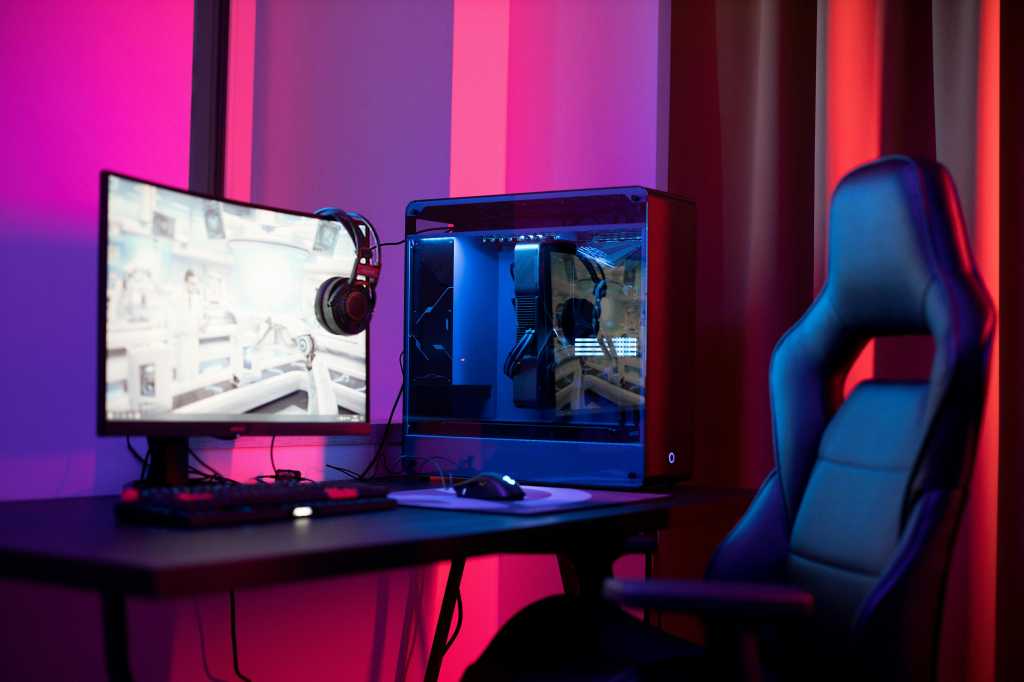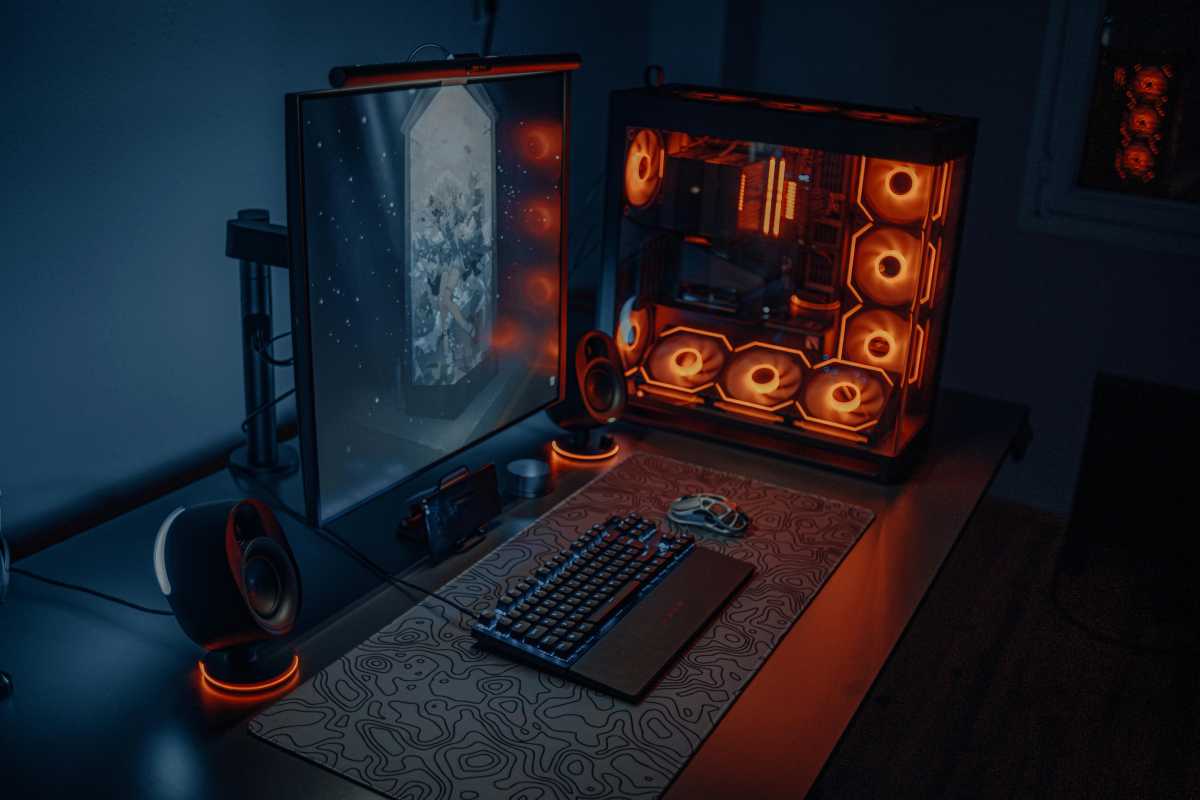## My PC Died a Slow, Heatstroke-Induced Death: A Cautionary Tale
You’ve built your dream gaming rig, decked it out with the latest GPU and CPU, and finally, the moment is here – firing it up for the first time. But before you dive into glorious pixelated worlds, hold on! What about the location of this beastly machine?

The Anatomy of Bad Placement
Restricted Airflow

One of the most critical factors in PC performance and longevity is proper airflow. A well-ventilated system dissipates heat effectively, preventing components from overheating and causing potential damage. When a PC is placed in an unfavorable location, restricted airflow can have a detrimental impact on its cooling system.
For instance, placing a PC directly on a carpet can significantly hinder airflow through the bottom vents. Carpets, with their thick fibers, act as a barrier, trapping air and preventing it from circulating freely. This restricted airflow can lead to increased temperatures inside the PC case, forcing the fans to work harder and potentially shortening their lifespan. A good rule of thumb is to elevate your PC off the floor, allowing for unobstructed airflow underneath.

Dust Magnet
Another consequence of poor PC placement is increased dust accumulation. A PC situated in a dusty environment or near sources of airborne particles becomes a magnet for dust, which can clog fans, radiators, and other internal components. This buildup reduces cooling efficiency, leading to higher temperatures and potential performance issues.
Consider a PC placed near a window or in a room with frequent foot traffic. These locations tend to be exposed to higher levels of dust, pollen, and other airborne particles. Over time, these particles settle onto the PC’s exterior and eventually find their way into the case through vents and open slots. Even seemingly clean environments can harbor dust mites and other microscopic particles that can accumulate inside a PC.
Heat Traps
Placing a PC near heat sources, such as radiators, heaters, or direct sunlight, can create a heat trap, exacerbating the risk of overheating. Heat generated by these sources can radiate into the PC case, raising internal temperatures even further. This can put a strain on the cooling system, leading to performance throttling, system instability, and potentially permanent damage to sensitive components.
For example, positioning a PC directly under a ceiling vent or near a wall-mounted heater can create a localized hot spot. The heat from these sources can be concentrated inside the PC case, making it difficult for the cooling system to dissipate effectively. Even moderate increases in temperature can have a noticeable impact on PC performance and reliability.
Best Practices for PC Placement: A Gamer’s Guide to Longevity
The Ideal Foundation
To ensure optimal airflow and prevent dust ingress, a stable and hard surface is essential for PC placement. Avoid placing your PC on soft surfaces such as carpets or blankets, as they can trap air and impede airflow. A solid, flat surface, such as a wooden desk or a metal stand, provides a stable base for the PC and allows for unobstructed airflow underneath.
The foundation also needs to be able to support the weight of the PC. A wobbly or unstable surface can lead to damage to the PC and potential injury if it falls. It’s important to choose a base that can handle the weight of your specific PC model.
Space to Breathe
Adequate clearance around the PC is crucial for optimal ventilation. Restricting airflow by crowding the PC can lead to overheating and performance issues. Ensure there is sufficient space on all sides of the PC to allow for proper air circulation.
A general rule of thumb is to leave at least 5-10 inches of space around the PC. This provides ample room for the intake and exhaust fans to draw in cool air and expel hot air effectively. Avoid placing the PC in enclosed spaces or against walls, as this can restrict airflow and create a heat trap.
Heat Be Gone
Keeping your PC away from heat sources is essential for maintaining optimal operating temperatures. Direct sunlight, radiators, heaters, and other sources of heat can radiate into the PC case, raising internal temperatures and putting a strain on the cooling system.
Avoid placing your PC near sources of direct heat. If you must place your PC near a window, use curtains or blinds to minimize direct sunlight exposure. If you use a heater, ensure the PC is a safe distance away. Regularly check the ambient temperature in your gaming area and adjust the PC’s placement as needed.
Regular Maintenance
Proactively maintaining your PC by regularly cleaning it and checking for dust buildup can prevent future problems. Dust accumulation can significantly hinder airflow and cooling efficiency, leading to overheating and performance issues.
Schedule regular cleanings, at least every few months, to remove dust from the PC’s exterior, vents, fans, and internal components. Use compressed air or a soft brush to gently remove dust. If you notice excessive dust buildup, consider using a vacuum cleaner with a brush attachment to clean the interior.
Conclusion
So, there you have it. PCWorld’s tale of woe serves as a stark reminder that even seasoned gamers aren’t immune to rookie mistakes. We’ve all been there, tinkering with our setups, eager to squeeze out every last frame or RGB flourish. But the lesson here is clear: ergonomics, airflow, and a little forethought can make all the difference between peak performance and a frustrating meltdown.
Think about it: your gaming PC isn’t just a machine; it’s your portal to countless digital worlds. Neglecting its basic needs is like trying to conquer a boss battle with a broken controller. It might work, but it’s going to be a lot harder, and a lot less enjoyable. As technology evolves and our demands on our PCs grow, understanding these fundamental principles will become even more crucial. We’ll need to be mindful of factors like heat dissipation, cable management, and even the ambient temperature of our gaming spaces. After all, the future of gaming is built on pushing boundaries, and a stable, well-maintained PC is the bedrock upon which those boundaries are shattered.
Don’t let your gaming ambitions be stifled by a poorly placed machine. Invest in your setup, and let your PC be the champion it’s meant to be.